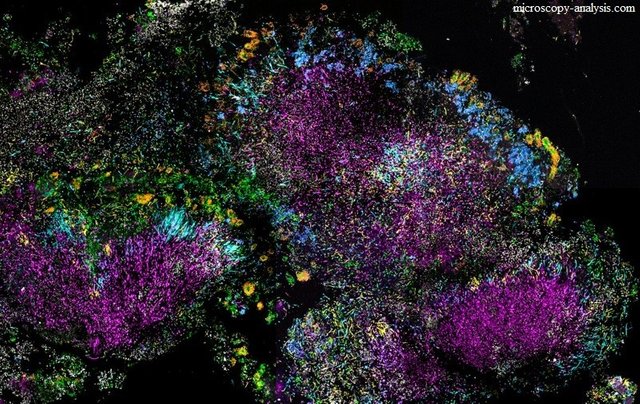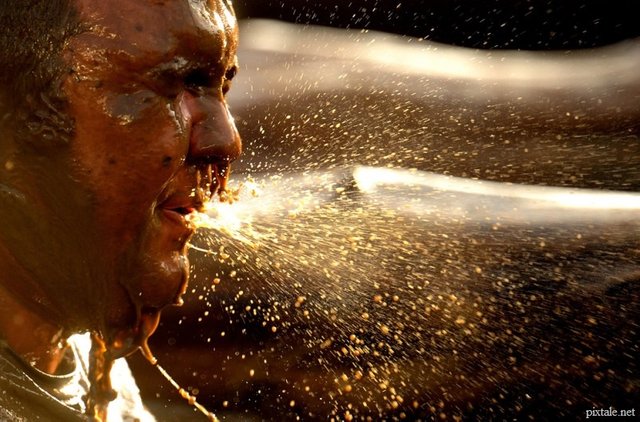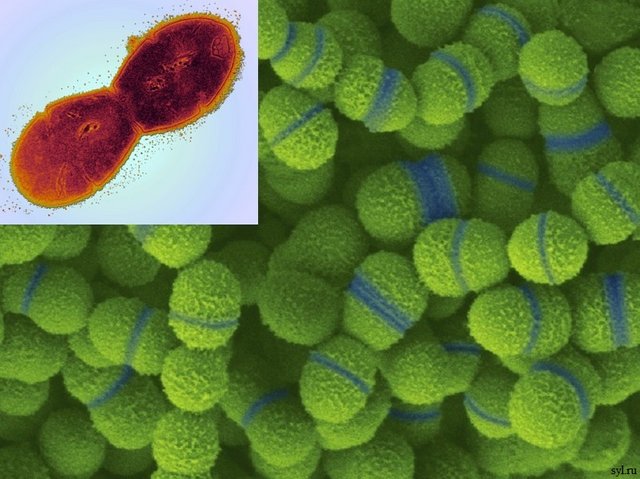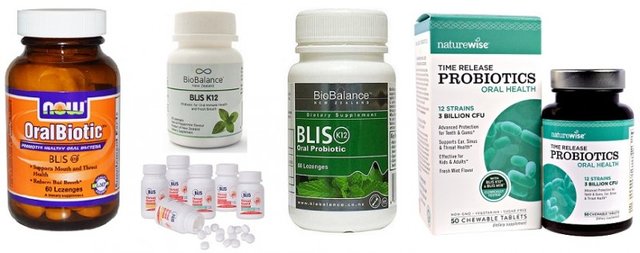Are you suffering from bad breath despite brushing your teeth regularly and keeping them in good shape? Finding a solution might feel like an exercise in futility as your therapist sends you over to the dentist, the dentist says it’s an ENT problem, the otolaryngologist advises you to visit your gastroenterologist, and the latter claims (not without reason) that your gullet would never let bad odor escape from your stomach. Frustrated patients end up developing paranoia and depression and spend a fortune on mouthwashes and chewing gum - all for naught. Meanwhile, studies show that halitosis (scientific term for “bad breath”) likely has nothing to do with either your teeth or your stomach, and about 80-90 percent of halitosis cases are actually caused by pathogenic flora in people’s ENT organs. This article will explain what causes development of halitosis, how to detect bad breath, and what you can do to get rid of it for good.

What Causes Halitosis
Substances responsible for unpleasant smell are called odorants and include compounds like methanethiol, hydrogen sulfide, and dimethyl sulfide. Anaerobic bacteria that breed on the surface of the tongue and in gingival pockets produce them as they break down proteins they find in food particles. These bacteria shouldn’t be cause for worry by themselves – any healthy person has them, just like hundreds of other types of microorganisms, and a healthy bacterial flora and immune system can easily keep their numbers and activity in check. The critical part is knowing what causes this balance to go downhill, and how not to let the troublemakers run amok.
It all begins in childhood. A newborn’s mouth usually has nothing but a light mozzarella-like smell (the one that causes that strong serotonin response in young mothers). Most babies stick to a milk diet, but the lack of bad smell can’t be attributed to it per se – like adult food, breast milk has no shortage of proteins. It’s the immunoglobulins and lysozyme it contains that do the trick by killing off anaerobic bacteria. Children are unlikely to have bad breath even when their mothers start cutting down on breastfeeding, but when they cease it altogether, they finally give the green light to potentially pathogenic anaerobes.

And when the kids get their first hit with bacterial infections, worried parents introduce them to the world of antibiotics and antiseptics, which carpet bomb their bacterial flora, both good and bad. Just take a moment to appreciate that fact that you’d need to revive a population of more than 700 different metabolically interdependent bacteria to restore normal flora from scratch. Shown below is what a healthy oral flora looks like – there aren’t enough fluorescent tags to color all the bacteria:

Restoration of these microorganisms in all their diversity, if at all possible, can take months or even years. Probiotic yogurt just won’t do – unsustainable lactobacilli and bifidobacteria are all it has to offer. The meds create a power vacuum, and other pathogenic bacteria rush in to settle down on the vacated mucous membranes of ENT organs, causing further infection. This brings us back to the vicious cycle of sprays, antiseptics, and antibiotics and ultimately leads to a buildup of drug-resistant chronic infections. From my personal experience, by age of 30 I had cases of acute and chronic pneumonias, bronchitis, angina, pharyngitis, laryngitis, stomatitis, and tooth cavities. All those cases were invariably accompanied by halitosis. In fact, all infectious mouth and ENT organ diseases (including hidden ones) can boast halitosis as a side effect. Are you confident you don’t have it? Just don’t try blowing into your hand – it doesn’t work. If you want to check whether you have bad breath, you’ve got to do it right.

Test Your Own Breath
Molecules of odorants are ever-present on your olfactory receptors, which is why your nose gets used to their constant concentration and the balance between all components in the mixture while the brain learns to dismiss it as irrelevant information. But when someone else’s breath has a higher concentration of odorants or has them in different proportions, our nose registers the information on this new smell and passes it on.

Simply put, no matter how bad our breath is, only someone else can notice the awful ‘fragrance’. Of course, not everyone can get themselves to ask their relatives or friends for an opinion about their breath. Thankfully, dentists have come up with a clever self-test. Just lick the back of your hand with the middle of your tongue, give it a minute to dry, then smell it. Evaporation of saliva and the heat coming from the skin cause sublimation of noxious odorants, which are barely soluble and have a very low boiling point (°C 37 for dimethyl sulfide). A change in their concentration triggers your olfactory receptors, allowing the brain to register an unfamiliar smell and appreciate it to its full extent.

Normally, everybody’s breath is supposed to have a faint smell, as any healthy person is host to at least a small number of potentially pathogenic bacteria. However, if your mouth odor gets strongly repulsive, it’s a sure sign of halitosis, and other people can and will take notice.
Treating Halitosis and ENT Infections
But, if the causes of the problem are so clear now, do scientists have a solution? Back in 1970s, it was discovered that Streptococcus salivarius is the first bacteria to colonize the sterile mouth of a newborn just hours after birth, becoming part of a normal flora for their entire life. 34 years later, a large study of schoolchildren’s ENT organ flora determined that this bacterial strain dominates the ENT organs’ mucous membranes of those children who do not suffer from respiratory diseases. These friendly microorganisms were found to produce bacteriocin-like inhibitory substances (BLIS), which inhibit breeding of pathogenic bacteria, including those causing halitosis and infectious diseases.

Researchers proceeded to cultivate a lab strain (Blis-k12) and identify the formula of BLIS in hopes that applying this substance to mucous membranes would help treat infections and prevent halitosis. Sadly, the effect was similar to that of antibiotics, antiseptics, and mouthwashes – it took good bacteria with the bad, and infections kept returning after the treatment stopped. As it turned out, the ultimate secret of Streptococcus salivarius was in synthesizing BLIS only in the areas where the growth of pathogenic bacteria was the most rapid to prevent it from affecting normal microbial flora as a whole. With that knowledge in mind, scientists’ next attempt was to populate ENT mucous membranes with live bacteria, and this time it was proven effective in prevention and therapy of diseases like pharyngitis, laryngitis, otitis, tonsillitis (angina), and tooth decay, which, in turn, are likely causes of halitosis.
Clinical trials of the Blis-k12 strain on children between 3-13 years old with recurrent throat infections were staggering, showing a decline in occurrence rate of new diseases by 90 percent. The need for antibiotic therapy among the recipients was 30 times lower than that of the control group. As an added benefit, the use of this probiotic decreased the occurrence rate of viral infections by 80 percent. As for halitosis, additional studies were performed on volunteers with existing high concentrations of odorants in their breath, and application of Blis-k12 helped eliminate unpleasant odor for 85 percent of subjects. Following successful trials, dozens of products containing this strain hit the market under different brands.

I wouldn’t go so deep into the subject myself without first-hand experience. My struggle with halitosis used to be brought up a lot throughout my communications with my readers. It began a few years ago, back when my son went to kindergarten. He started frequently falling ill himself and bringing new infections home, which made me almost permanently sick as a result. During a wellness checkup at work, I was diagnosed with golden staph, but prescribed mints, antibiotics, and bacteriophages only worked for 3-5 days. Each time the treatment stopped, the disease would return, burrowing deeper and deeper into my respiratory system.
Later on, while looking for sources for my thesis, I stumbled upon clinical trial data on a probiotic that contained Blis-k12. I couldn’t find it in nearby pharmacies, so I had to order it through the Internet. I ordered this brand, but there are cheaper options with fewer pills. After one week of use, I finally felt a strong and lasting improvement in my condition, and the halitosis was gone as well. And now, as soon as I feel something happening in my throat, I take one tablet before bed, and everything goes back to normal in the morning. Having tried this supplement on myself and my family, I can give it my recommendation with confidence, and I’m ready to answer any questions.
My name is Andrew, PhD, physician of laboratory diagnostics - House M.D. in real life ;) I work in the field of bone marrow transplantation for patients with cancer. In my blog you will know why we yawn, our eyes cry, fingers shrivel and scrotum is cold. Interested? Then follow this blog and don't forget to share the information with your friends!
welcome Doc!
Downvoting a post can decrease pending rewards and make it less visible. Common reasons:
Submit
Добро пожаловать на Steemit! )
ЗЫ: Я смотрю с новым хардфорком здесь проснулись многие кто раньше зарегался и забил ))
Downvoting a post can decrease pending rewards and make it less visible. Common reasons:
Submit
Андрей, добрый день! Знакомые все лица=)))
Downvoting a post can decrease pending rewards and make it less visible. Common reasons:
Submit
подписалась
Downvoting a post can decrease pending rewards and make it less visible. Common reasons:
Submit